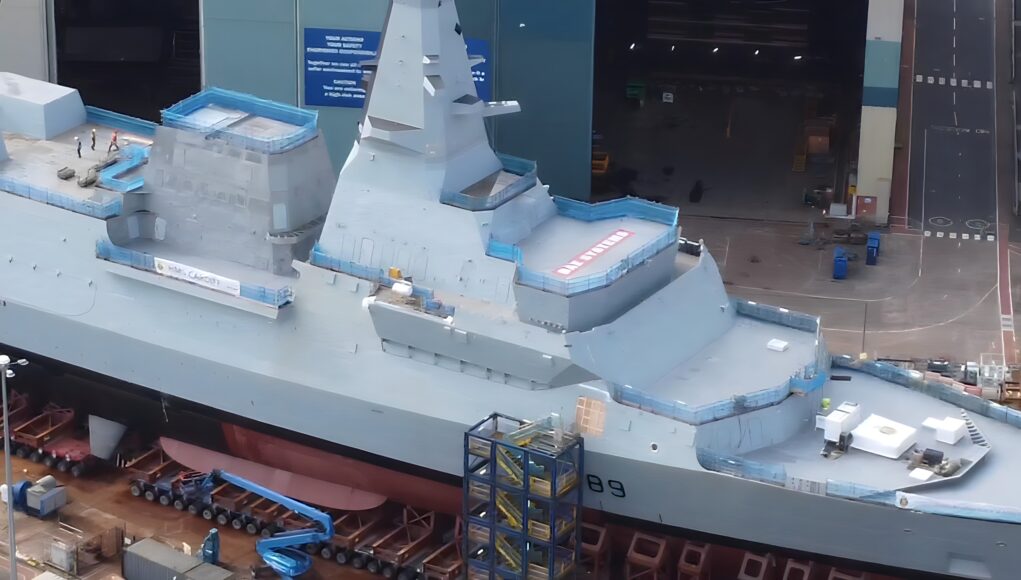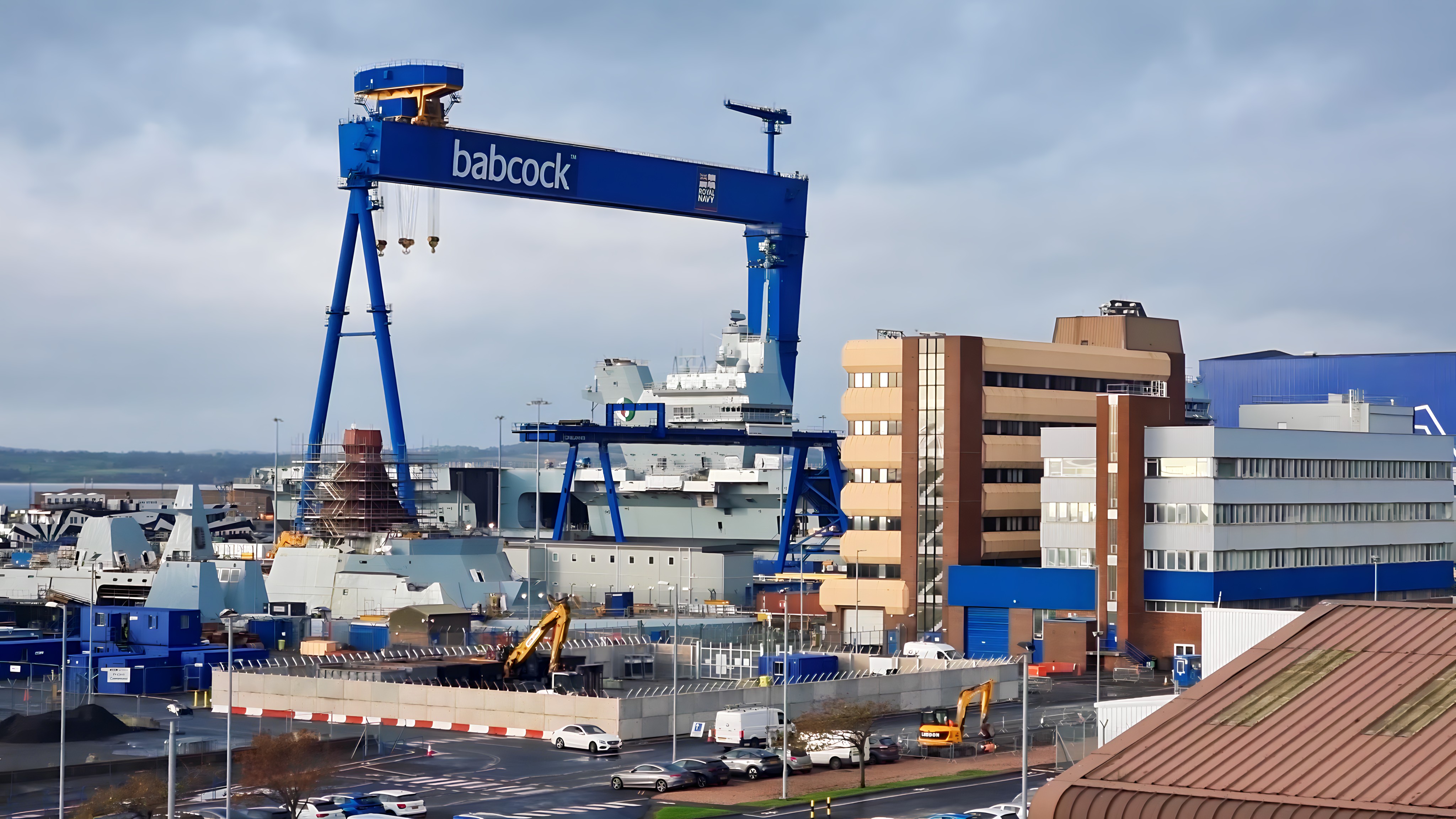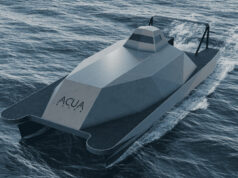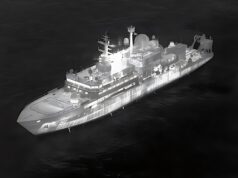A wide-ranging debate in the House of Lords on 30 April saw peers from across the political spectrum press the Government to deliver not just a strategy, but a sustained programme of orders to rebuild Britain’s shipbuilding capacity.
The exchange, led by Defence Minister Lord Coaker, highlighted concerns over the lack of consistent naval procurement, uncertainty around export support, and missed opportunities for UK industry.
Opening the discussion, Lord Beamish (Labour) reiterated the Government’s commitment to supporting a thriving shipbuilding sector across the UK, encompassing everything from full vessel builds to repair and integration: “The Ministry of Defence continues to support the sector,” he said. However, Lord Coaker, also representing the Ministry of Defence, was more direct in his critique of past failings.
While acknowledging that the National Shipbuilding Strategy had been refreshed in 2022, he noted that shortly afterward the previous Government awarded a contract to Spain. He raised current concerns about tenders for Trinity House and Border Force vessels potentially going to foreign yards, asking pointedly: “Why is shipbuilding not part of the national growth strategy?”
Baroness Smith of Newnham (Liberal Democrat) supported the call for domestic procurement, saying: “Manufacturing in this country needs to be rebuilt—and part of that rebuilding has to be shipbuilding.” She urged departments beyond the Ministry of Defence to take responsibility for ensuring government ship orders go to UK yards where possible.
Lord Coaker agreed and pressed further: “When will shipbuilding orders be created? It is meaningless unless there are orders—not just one-off projects, but a drumbeat of orders.” He warned that without a predictable pipeline, “we will not get the shipyards and SMEs to recruit people, invest, or take on apprentices.”
Baroness Goldie (Conservative) echoed these concerns, warning that “the ability to build ships is everything” to the UK’s future security. She said that “the shipyards will have to be rebuilt, and apprentices will have to be trained,” adding that this would require long-term consistency, not reactive procurement.
Lord Mountevans (Crossbench) highlighted successes at Rosyth and on the Clyde with the Type 31 programme and welcomed the involvement of the National Shipbuilding Office, but called for even more cross-government coordination to support UK yards.
Discussion also turned to the commercial shipbuilding sector. Lord Coaker criticised the slow progress in enabling exports, referencing the Parker Report and calling on the Government to “unfreeze funds for export credit guarantees where we have orders and people want to build here.”
Lord West of Spithead (Labour) clarified that the National Shipbuilding Office sits within the Ministry of Defence but works across government, and confirmed that a review is ongoing into how financing could be improved for export projects. “We are not satisfied with how that is working at present,” he said.
Lord Lee of Trafford (Liberal Democrat) noted some positive movement, citing MoD orders being placed at Rosyth and other yards, while Lord Coaker closed the debate with a strong endorsement for future action: “Let me say to the noble Lord, I will be one of those advocating to ensure that, as far as possible, ship orders in the UK are built by British shipyards.”
The debate reflected growing cross-party consensus on the need to make shipbuilding central not just to defence policy, but to the wider industrial strategy. Peers urged the Government to match strategic rhetoric with visible investment—through consistent orders that would restore industrial capacity, rebuild skills, and support the growth of British yards.














I wish they would build more Type 26, it’s a hugely capable and versatile ship, the cost per ship has come down too.
I would suggest that as the first vessel is still fitting out, you are being rather previous in your claim.
On paper or maybe on CAD might be a better way of putting it. Hopefully it won’t be too long before we see it on sea trials.
We need a shed load of these if they are half as good as Cravendale thinks and we need to find a way of building them rapidly (just like the rest of the kit we are short of).
I just came across this amazing way to earn $6,000-$8,000 a month online! No selling, no struggle—just a simple system that anyone can follow. Kelly Richards did it, and so can you! Don’t miss out on this life-changing opportunity.
Check it out now!….. 𝐖𝐖𝐖.𝐖𝐎𝐑𝐊𝐒𝐓𝐀𝐑𝟏.𝐂𝐎𝐌
Type 45 wasn’t all that expensive either. It was made expensive by halving the order. The NRE cost per ship was thus doubled.
Well in theory we could order a dozen more obviously incorporating lessons learned from PIP etc. or indeed use the T26 or T31 as a platform for increasing the AAW capability.
No because we’re moving away from Slyver Vls
The MOD is responsible for defence not industrial strategy. The government should fund that separately not out of the defence budget. Otherwise we end up with less kit and potentially less capability.
Sort of agree.
The main thing is that the UK produced ships are now cost effective to build in numbers.
That’s the sort of silo based thinking that has got us where we are today, cross fertilisation of capability, capacity and resources is so important but largely ignored. Just take s look at the way the US DoD and industry behave.
My understanding is that the labour govt is attempting to implement what Mariana Mazzucato calls a ‘mission based’ economy. No money without a detailed resource and capacity plan of how it will be spent and no plans without assurance of finance in place. I wish them luck.
Yes and no.
The government should fund it out of the defence budget by ordering more ships. That is literally the only way to sustain the UK naval shipbuilding industry.
However, more money should come from HM Treasury to to MoD to fund that and not expect it to come at the expense of other equipment or personnel.
The Italians have made use of cross departmental funding for decades which probably goes some way to explaining how they get so much defence capability for apparently so little… Although, a lot of the cross funding might be for operational costs, still…
Cheers CR
Yep the UK needs to do what the Italians do and just keep knocking out a large surface combatant each year no matter what else is being built.. the larger vessels such as carriers and amphibious vessels as well as the OPVs are built around this concept and extra to the constant drumbeat of large surface combatants..as such Italy always has a ship to sell you off the production line..and so gets a lot of orders this way. ..it also produces very very cheap major surface combatants for its own navy.
I would like to see Italian survivability standards before comparing their cheap with RN cheap. There was an article on NL a while back comparing the T31 to the original IH class. A brilliant comparison of a compartment between the two classes and the difference was stark. The RN has very very high survivability standards. (If I remember rightly the B2 Rivers had the survivability standards applied possibly to get something back for the RN’s money given the overprice cost of the ships.)
I’d rather pay more for our ships than risk them going the way of our battlecruisers, especially in the opening phases of any conflict as we risk losing our professional crews!
Cheers CR
ultimately if we launch 3-5 ships each year then the costs will reduce and we will get more for our money
build slow, build fast – the volume of people is probably the same once all the improvements in working practices are factored in
so by building slow – unit cost goes up dramatically – as per T45, T26 and QEC
all could have been built cheaper and faster with no loss in quality
The first thing is to build to a commercially optimal build pace – that will reduce unit costs.
The current build pace isn’t commercial and we know it pushes the unit costs upwards.
I just made $3000 per hour.
Blah, blah, blah.
The T31 workload at Babcock Rosyth has now reached its peak. Without new orders (exports? T32? T92?), redundancies will be inevitable from 2028, and most of the shipyard will be closed or mothballed c.2031
Agree- Babcock fully deserve a second batch order for type 31- possibly with a bow mounted sonar and a medium calibre gun for NGS, would be risky sending a type 26 frigate or type 45 to bombard an enemy’s shoreline when a much smaller, more littoral optimised warship would be better- besides which the bofors 40’s and sea ceptor silos should provide enough close range protection to defend against return fire.
I think Babcock have proven themselves capable and warrant a second batch of type 31s.
Fantasy fleet time- post SDSR id hope to see a maritime focussed defence posture- leave the Europeans to face Mad Vlad’s hordes we should focus on securing the GIUK gap and north atlantic trade routes and protecting our EEZ
So 10 type 31s
Add 2-4 more type 26s for a total of 10-12 ASW optimised ships
fully refit the type 45s asap with sea ceptor, NSM (more sets needed) and finish the PIP work- getting there with PIP
push SSNr programme to the left and get construction going asap- with intention to operate a mixed fleet of astute and SSN Aukus until astute class have completed service lives then build more Aukus or revised Aukus to replace ASTUTE- regardless the RN SSN fleet needs to be 12-15 subs- this is a key area we have a qualitative superiority over the PLAN and Russians and we should maximise our advantage.
MPAs- 9 are not enough- the RAF needs to be operating a fleet of up to 15 Poseidon aircraft to provide the resilience and persistent on duty/ on station patrol capability- they will therefore also need A400 fleet increased and the tanker version fitted to refuel Poseidon out on station.
That would be a great result of SDSR 2025
Other issues to resolve such as MRSS, FSSS, future surveillance ships, replacement of the Archer class with possibly 2 classes of boats- one the size of archer class for inshore and training work- one a lot larger with a bit more teeth and more akin to an offshore patrol and attack craft- a stretched Samuel Beckett hull form would be reasonable.
Additional RFA Sterling Castle and Proteus class vessels to operate as MCM motherships and provide the vital offshore infrastructure protection required. The RFA should be provisioned to man and deploy up to 10 such vessels.
With just 4 Tide class tankers and both wave ruler and wave knight being scrapped/ sold off the RN has a good case for ordering another 2 Tide class from South Korea- they were built cheaply and at speed and if MRSS and FSSS are all ordered I dont think the UK’s yards will have capacity to construct additional Tide class ships.
That’s all from me.
Ha ha.